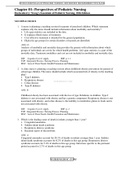College aantekeningen
All lectures from Understanding Prejudice + Short article & concept overview
- Instelling
- Universiteit Utrecht (UU)
This is a summary of all the lectures of Understanding Prejudice: an interdisciplinairy perspective on intergroup relations. It contains a lot of information from the lectures in a short and clear way, without omitting usefull details. The live lectures are also taking into account shorlty. At the ...
[Meer zien]













